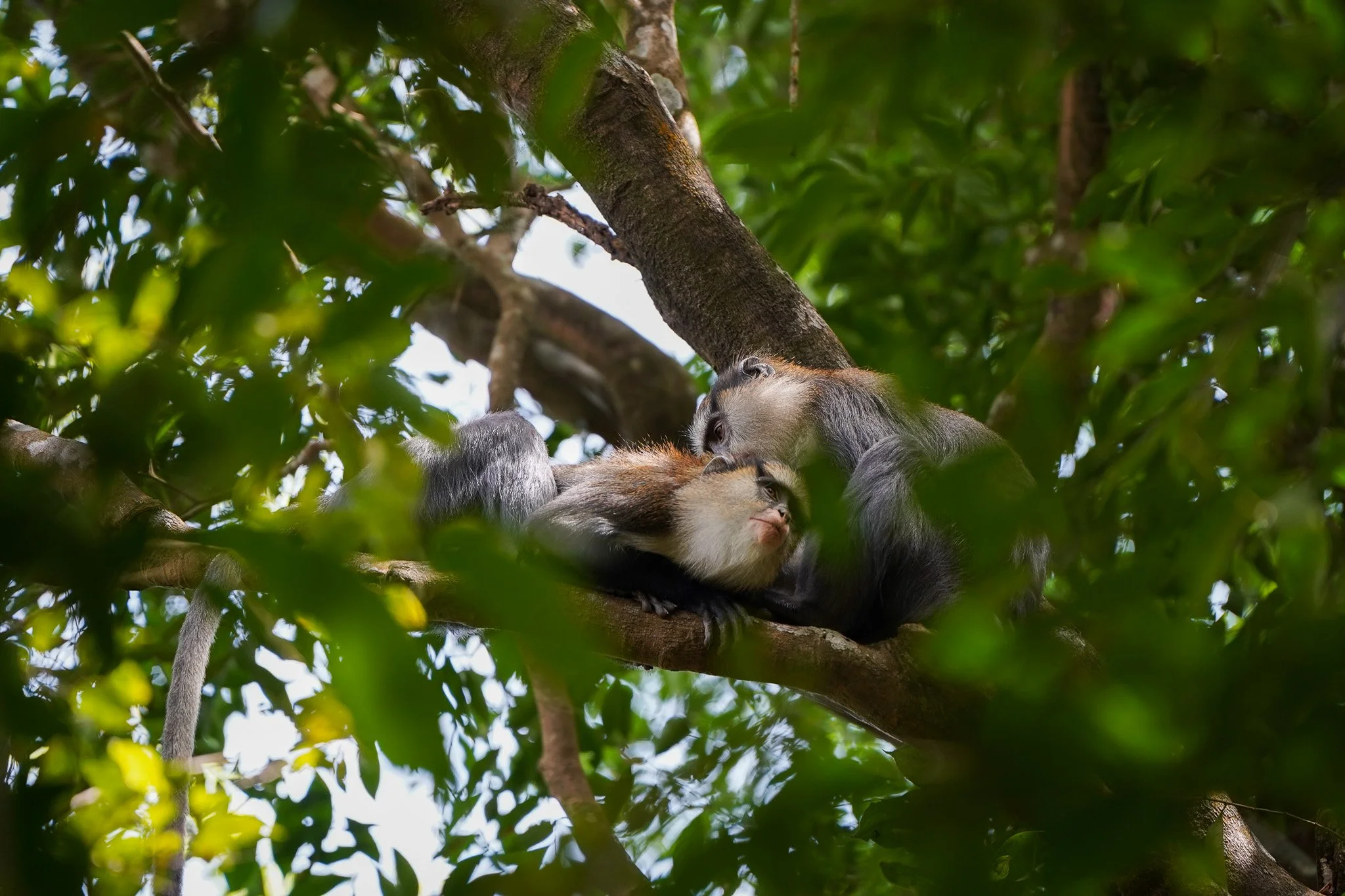This series captures the extraordinary wildlife of Sierra Leone. The Western Area Peninsula National Park in Freetown shelters a remarkable diversity of species, yet this fragile wilderness faces mounting pressure from rapid urbanization, illegal encroachment, and poaching. These photographs offer a glimpse into the lives of the forest’s inhabitants, showcasing an ecosystem that persists despite growing threats. They serve as a poignant reminder that the wilderness is not distant or separate from us—it is a living, enduring force, deeply intertwined with our own survival.
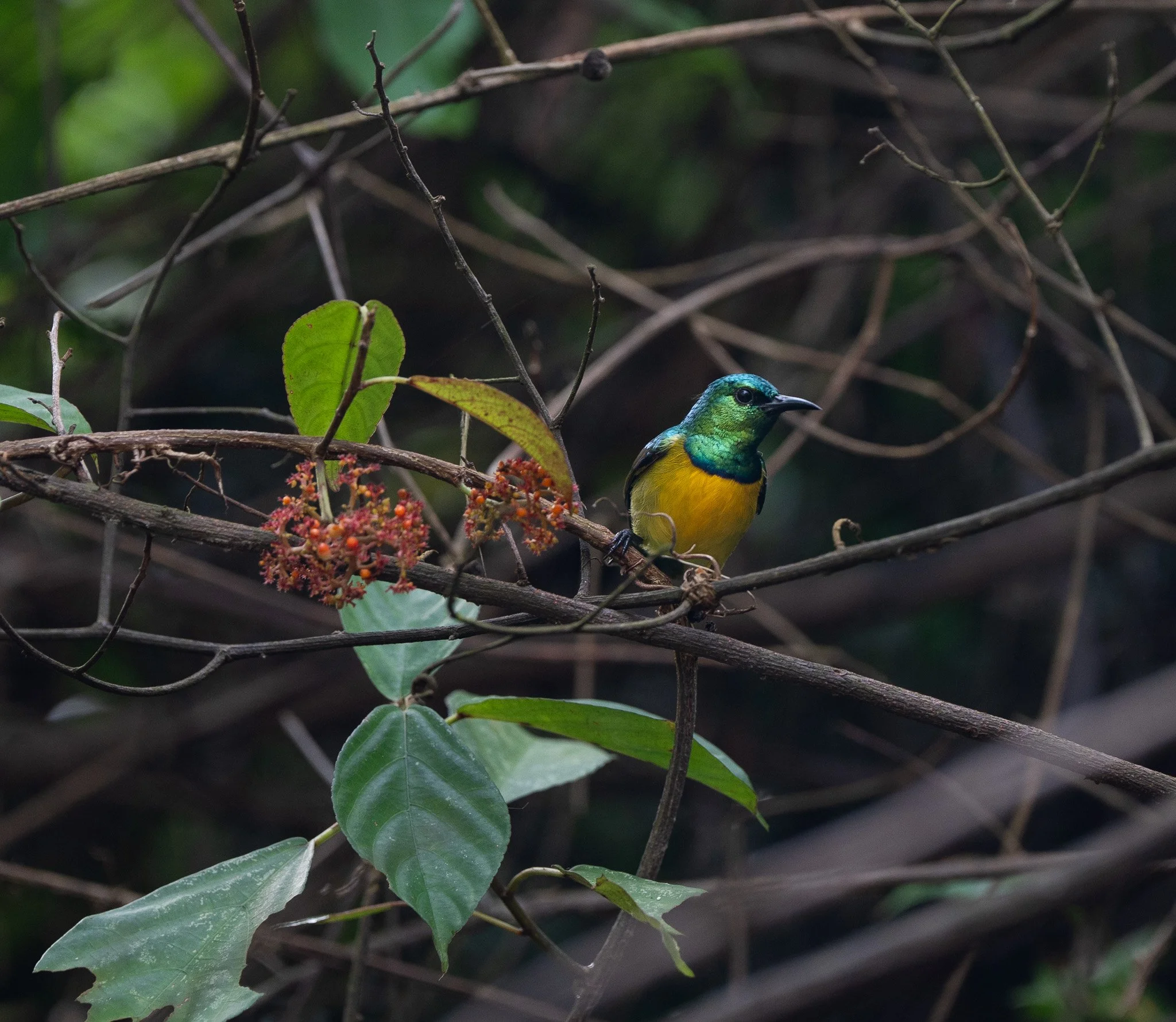
A variable sunbird glows in iridescent green and yellow as it perches on a branch, one of many tiny pollinators vital to the balance of the ecosystem.
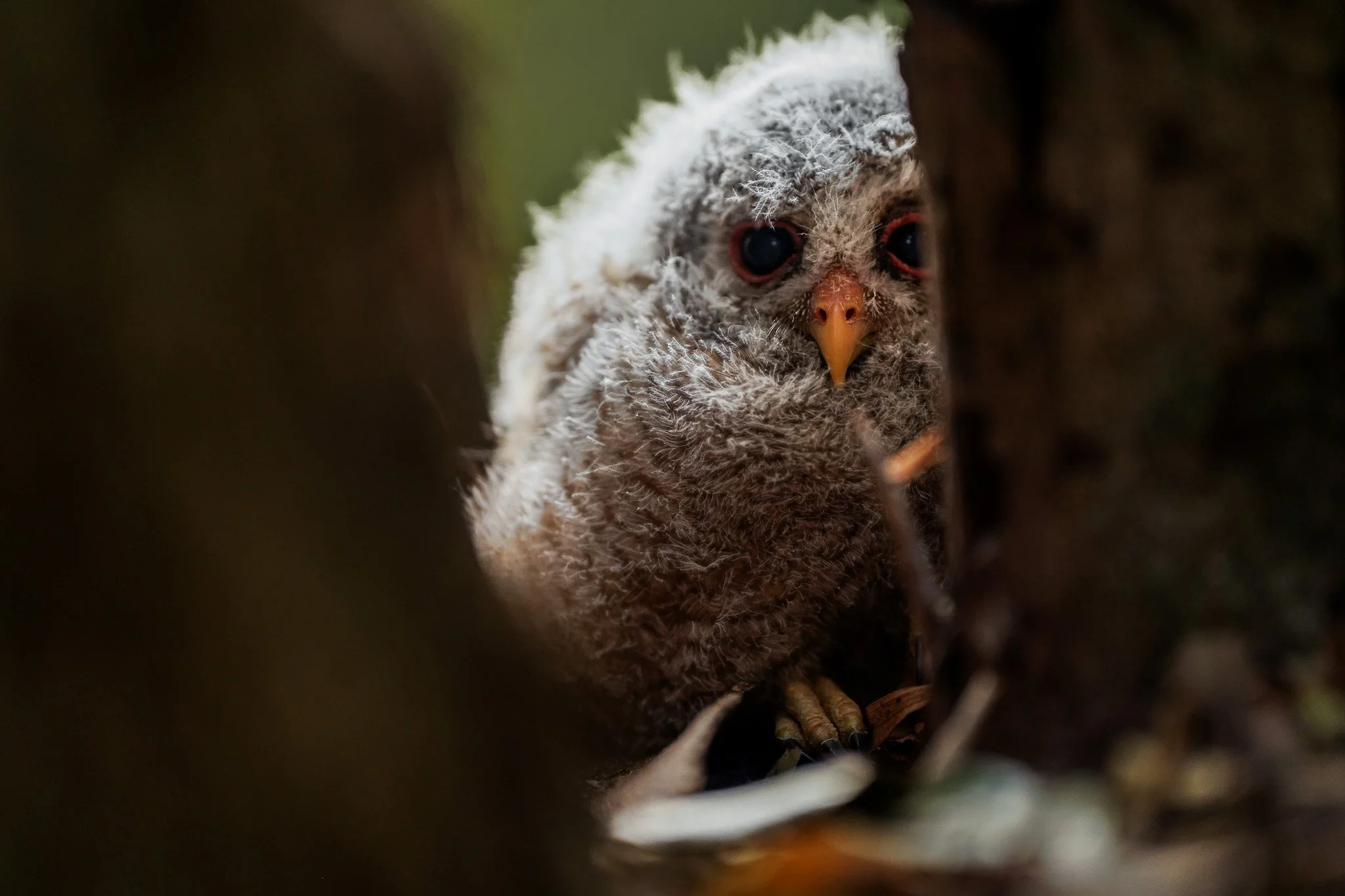
A baby African wood owl peers from its tree cavity, eagerly awaiting her mother's return.

A red-bellied paradise flycatcher patiently guards her nest, woven from twigs, grasses, and plant fibers and lined with feathers, hair, or spider silk for warmth and comfort. Both male and female build these nests during the breeding season, which in Sierra Leone occurs throughout the rainy months from May to October.
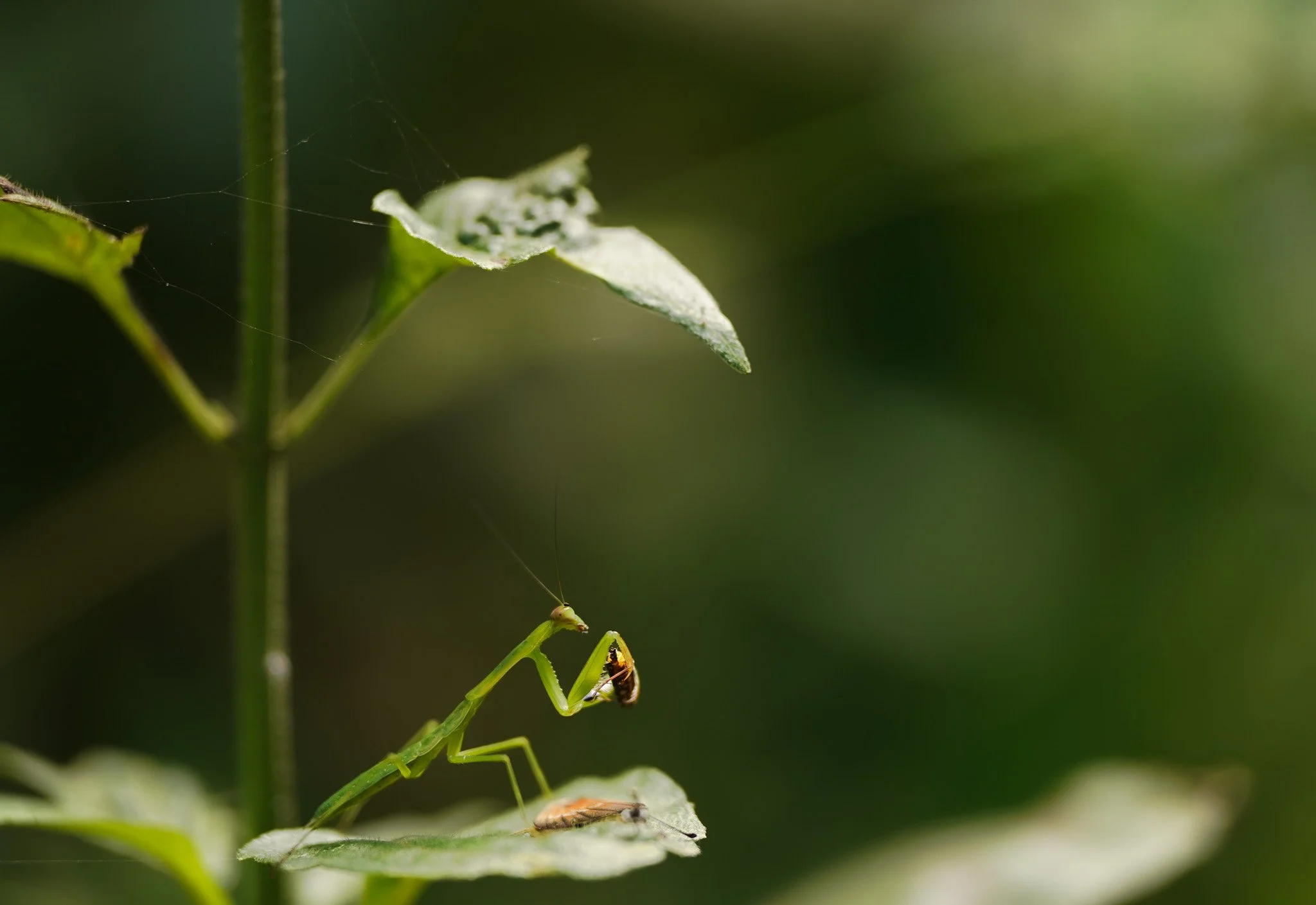
A praying mantis munches on a freshly caught butterfly.

Though its appearance might seem intimidating, the golden silk orb-weaver, sometimes referred to as the banana spider, is harmless to humans and plays an essential role in the ecosystem, quietly keeping insect populations in balance.
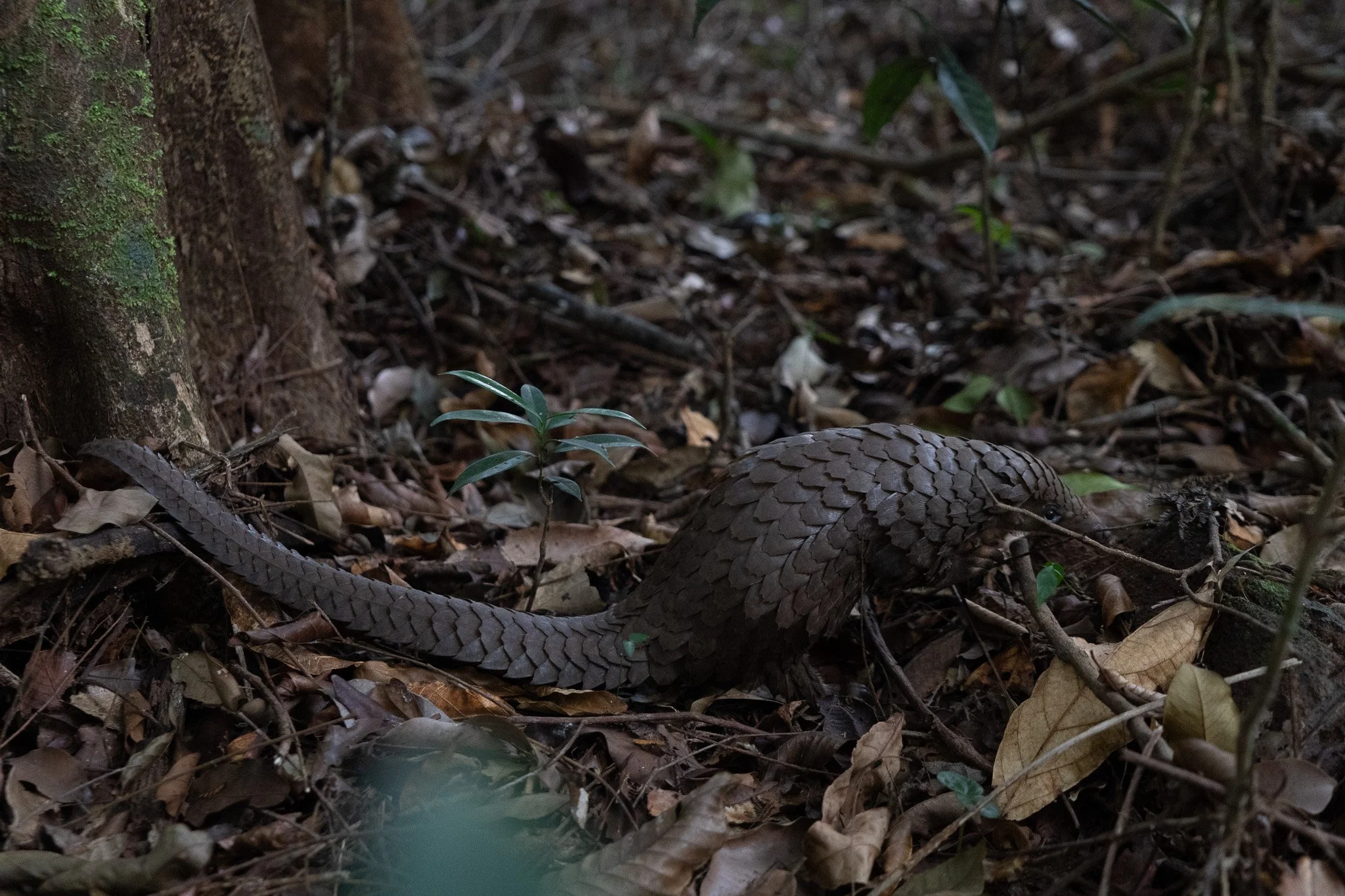
A tree pangolin, one of the most trafficked animals in the world, searches the forest for ants to consume. A pangolin can easily consume up to 2,000 ants per day.
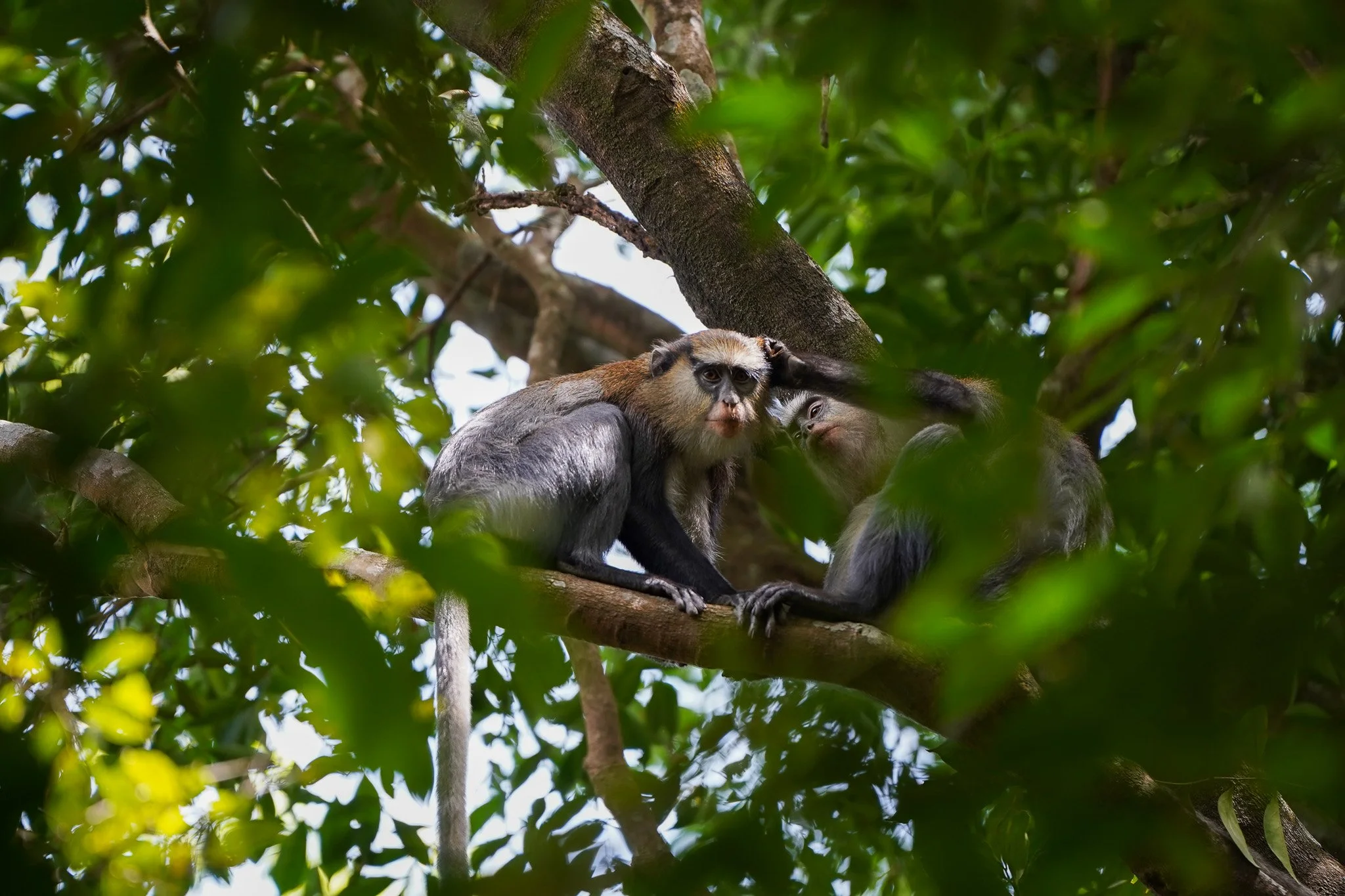
Campbell’s monkeys groom each other in the canopy of Sierra Leone’s forests — a daily ritual that strengthens social bonds.
